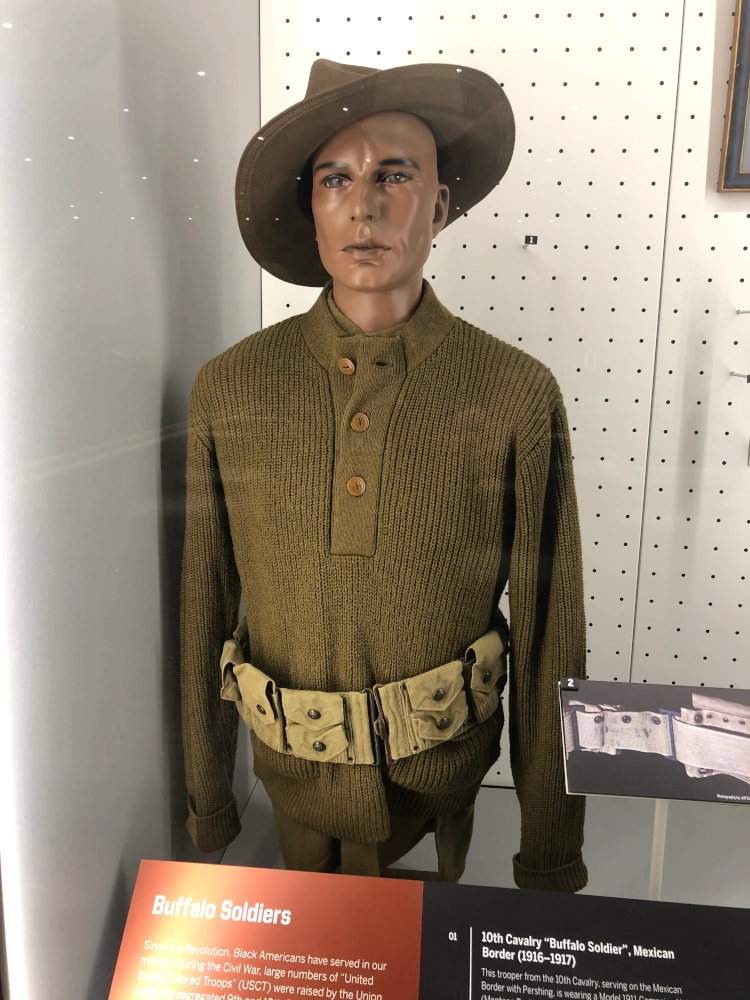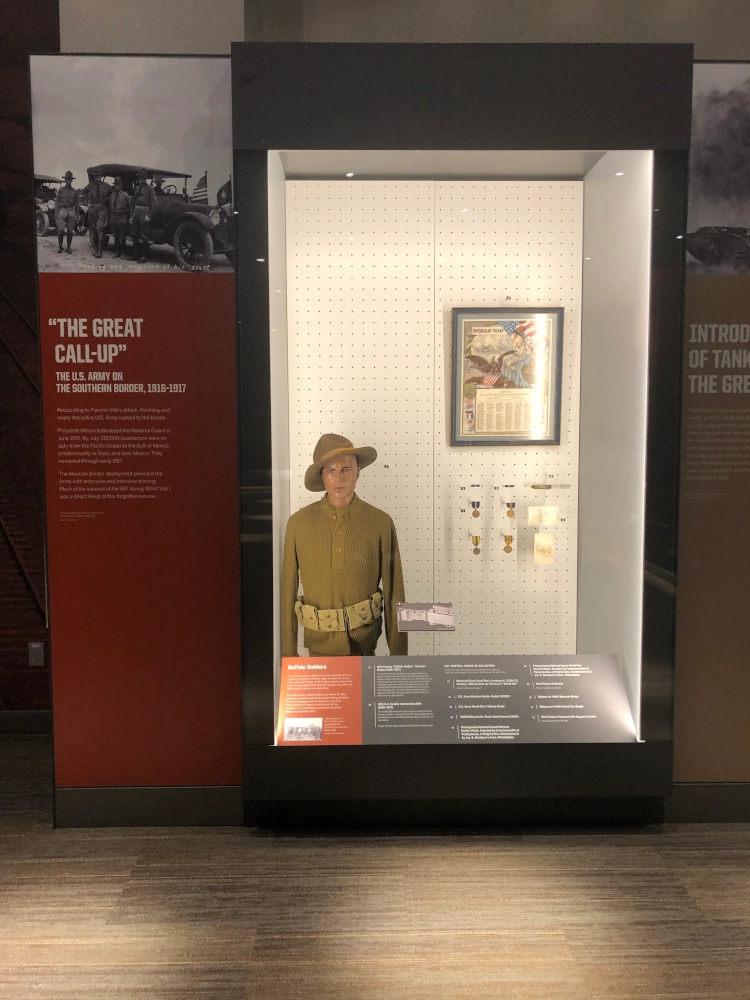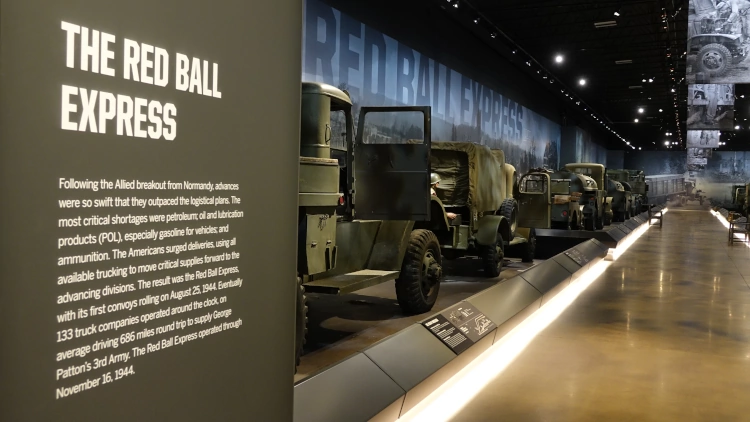
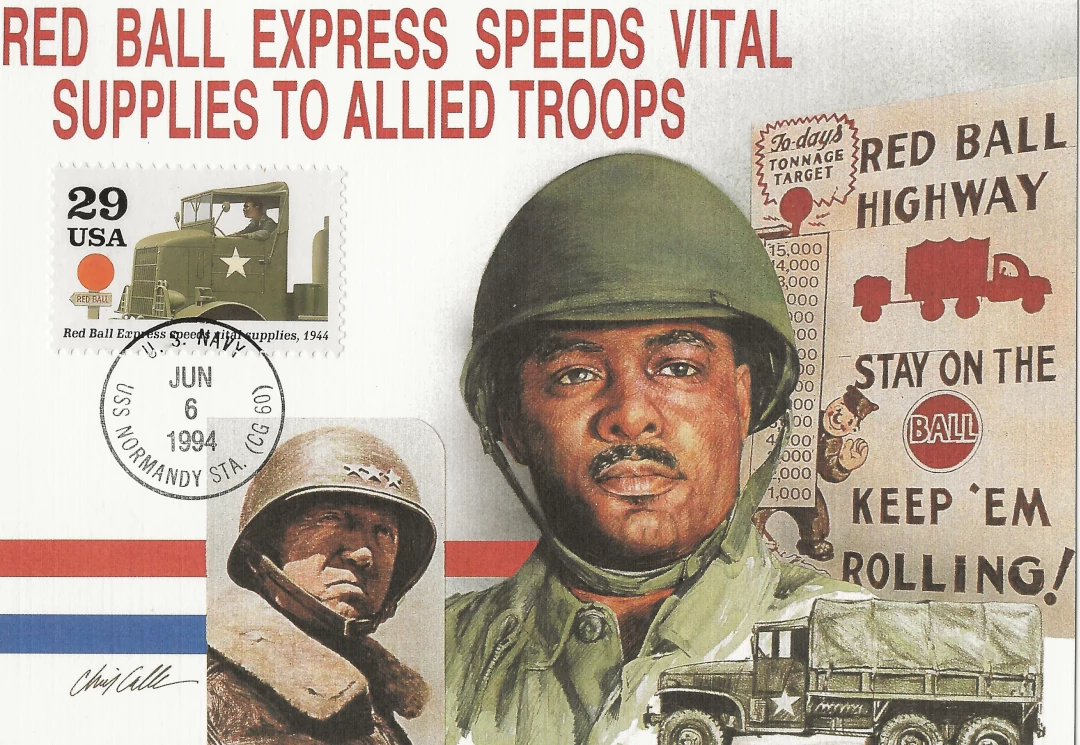
Red Ball Express First Day Cover
By Douglas R. Cubbison, Curator, National Museum of Military Vehicles
Black American Drivers of the U.S. Army Quartermaster Department
Following the breakout from Normandy, Allied advances were so swift that all logistical plans had been shattered. The most critical shortages were Petroleum, Oil, and Lubricant products (POL) primarily gasoline for vehicles, and ammunition. The American solution called for a surge using all available trucking companies to move critical supplies forward to the advancing divisions. The result was the Red Ball Express, with its first convoys rolling on August 25, 1944. Eventually, 133 truck companies operated around the clock, typically driving 686 miles round trip to supply George Patton's 3rd Army. The Red Ball Express operated through November 16, 1944.
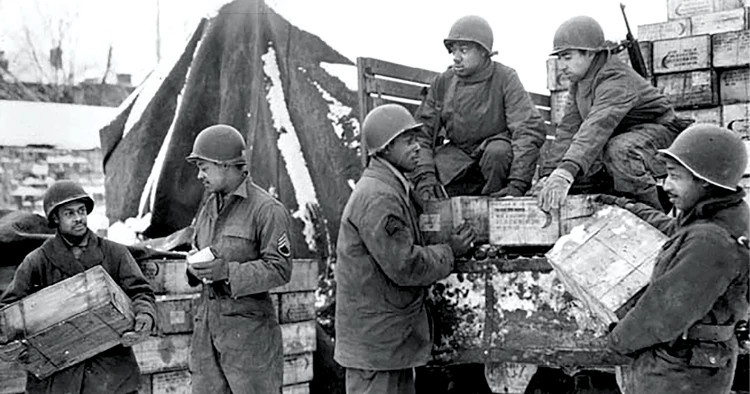
The 2-1/2 ton truck was a standard class of medium-duty trucks, designed at the beginning of World War II, constructed by GMC, Studebaker, and International Harvester. These 6x6 drive trucks were popularly known as "deuce and a half" trucks. The "deuce" was rated to carry 2-1/2 tons of cargo with excellent cross-country mobility and highway performance. With the generator removed, a loaded "deuce" could travel as fast as 52mph, and an unloaded truck was capable of 70 miles per hour. A Deuce-and-a-Half was authorized to carry 5 tons, twice its rated capacity, but even this generous limit was routinely violated. For example, 155mm artillery shells consistently weighed 100 pounds, and a single layer of these stacked into shipping crates reached the capacity of a Deuce. However, loading to strict weight limits created the impression that the trucks were being under-utilized and invaluable shipping space wasted. Accordingly, the practice was to jam as much onto a truck as it could possibly carry.
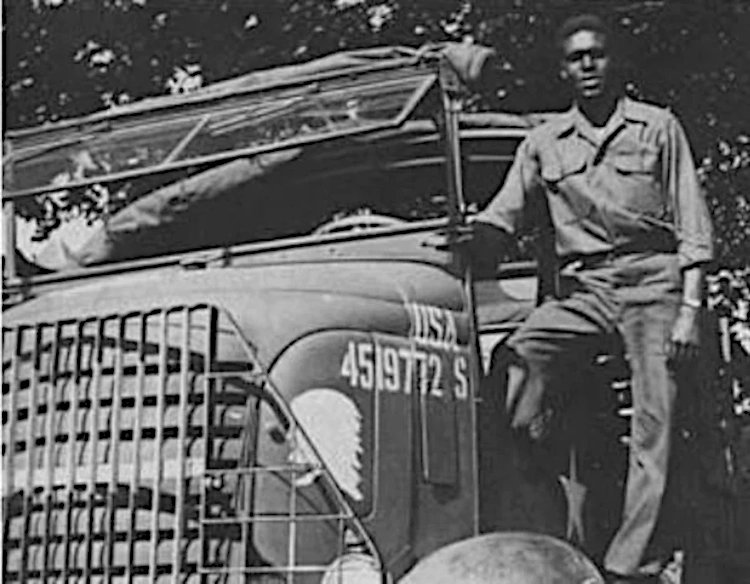
During World War II, U.S. Armed Forces were segregated. Although numerous "Colored" combat arms units fought with considerable valor, most Black Americans were relegated to service and service support units such as Quartermasters. As a result, most truck drivers and mechanics on the Red Ball Express were Black G.I.s - nearly four out of five drivers. Facing discrimination and a lack of respect, these drivers and mechanics proved their worth and were immensely proud to be "Red Ball" drivers. To this day, the memory of the Red Ball Express remains a considerable source of pride within Black communities, neighborhoods, and families.
"The 2-1/2 Ton Truck is our most valuable weapon"
- Lieutenant General George S. Patton
The National Museum of Military Vehicles tells the stories of these overlooked drivers in the Red Ball Express vignette of our Marshall Gallery.
